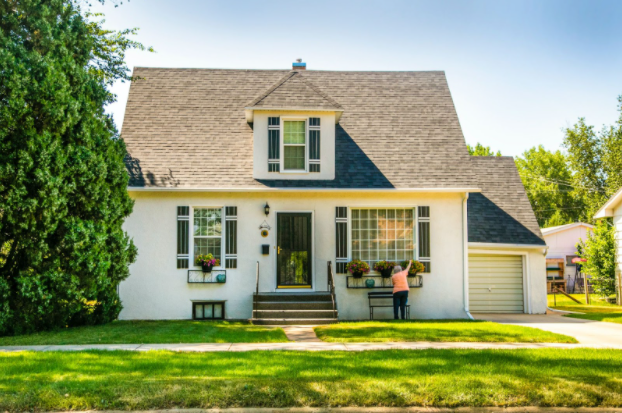The U.S housing market has been sizzling away for some time now, defying the odds against a backdrop of global pandemic conditions, and it’s showing no signs of significantly slowing down.
With appreciation figures regularly reaching double digits and buyers often caught up in fierce bidding wars, there is no shortage of action. So what does it all mean moving forwards?
Photo by Ian MacDonald on Unsplash
Is it a bubble that’s destined to burst?
According to the National Association of Realtors, existing home values catapulted to a record 17.2 percent between March 2020 and March 2021. While this climb overtook the appreciation pace of the last boom, appreciation has slowed slightly since, with values increasing by 15.8 percent year-on-year for December 2021. On top of this, according to Landlord Studio’s rental market report rent prices have also skyrocketed with median one-bedroom rents up 12 percent year-on-year nationally.
The last boom did result in a housing market bubble that burst. Between 2005 and 2007, the market was on fire, and when it crashed, it took the buoyancy of the global economy down with it. This market crash, having created the harshest economic conditions since the Great Depression, is still relatively fresh in people’s minds, so it’s no wonder that the fear of another housing market bubble bursting is all too real.
While, on the surface of it, the housing market conditions may currently seem to suggest a bubble, the fundamentals that underpin these extraordinary times are presently well-positioned to avoid it. Despite the worrying pace of appreciation, the market foundations are far more stable than they were before the last crash.
With the disastrous consequences of the last boom still playing on the minds of homeowners, investors, lenders, and economists, the pace of value appreciation is of concern.
But, despite these understandable concerns, sharp drops do not always follow steep rises, and many experts predict a plateauing of values instead of any dramatic declines or market crash.
Why the market isn’t poised to crash
According to the National Association of Realtors Chief Economist, Lawrence Yun, the housing market will likely cool off but is not expected to crash in 2022. “The housing sector’s success will continue, but I don’t expect next year’s performance to exceed this year’s,” he said.
The combination of factors that suggest that no market crash is imminent include:
Record low inventories: In September 2021, there were just 2.4 months of home supply on the market, and this lack of inventory causes buyers to bid up prices in competition with others. This supply and demand imbalance also prevents a market from crashing, as competition remains high, thus maintaining values.
Historically low mortgage rates: Having reached an all-time low in January 2021, mortgage rates have risen, but still remain relatively low by historical standards. As of February 2022, the average 30-year rate for a fixed mortgage in the U.S. is 4.23 percent, meaning that there are still many deals available that still sit below 4 percent that buyers can lock-in. Experts from the Mortgage Bankers Association predicted that rates wouldn’t exceed 4 percent by the end of 2022, so whether there will be many more rises throughout the year remains to be seen. Nevertheless, the rates are not expected to rise high enough to impact purchase borrowing, although they may curtail refinancing trends somewhat.
Foreclosures at record lows: Darren Robert of Northern Virginia Home Pro told us, “Many homeowners are currently sitting on a comfortable level of equity in their homes, and with so few default notices being filed during the pandemic, foreclosures have hit record lows.”
The number of foreclosures filed in 2021 was 151,153 – the lowest in over a decade. Soaring foreclosure rates depress prices, making this another sign of a healthy underpinning to what otherwise feels like a market bubble that may burst.
Builders struggling to meet demand: With such an imbalance of supply and demand, builders and developers simply cannot purchase land and push approvals through fast enough to meet the current market demands. Ultimately, the reason for the value hikes is the increase in demand amidst a lack of supply. Once Builders can begin to catch up, some balance will be restored, but it will take time.
Lending rules remain tight: Back in 2007, low-to-no document loans were surprisingly common, and lenders were offering mortgages far more liberally than they now do. Today, U.S. lenders are stricter than ever, and most mortgages are now obtained off the back of solid credit ratings.
According to a Federal Reserve Bank of New York’s quarterly report, the typical credit score for mortgage borrowers in the third quarter of 2021 was 781, just shy of a record high of 788 for the first quarter. In comparison, during the period of loose lending that contributed to the last market crash in 2007, the median credit score of borrowers at that time was at a shockingly low 707. At that time, the artificial buying power of these ill-equipped borrowers was driving prices up beyond a level that the market could realistically contain. So long as current lending standards remain as strict as they are, the market conditions will not be impacted in the same way.
Housing market to stay strong for the foreseeable future
It makes sense that such a pace of appreciation would be cause for alarm, especially amidst so much market activity and changing trends. Nevertheless, the foundations of the market are very different from that of the previous crash, and all signs point towards a gradual slowing and return to balance. So long as lending remains tightly controlled, rates stay affordable, and new builds begin to catch up, a return to increased inventory will satisfy more demand without causing the bottom to drop out of this red hot market.

